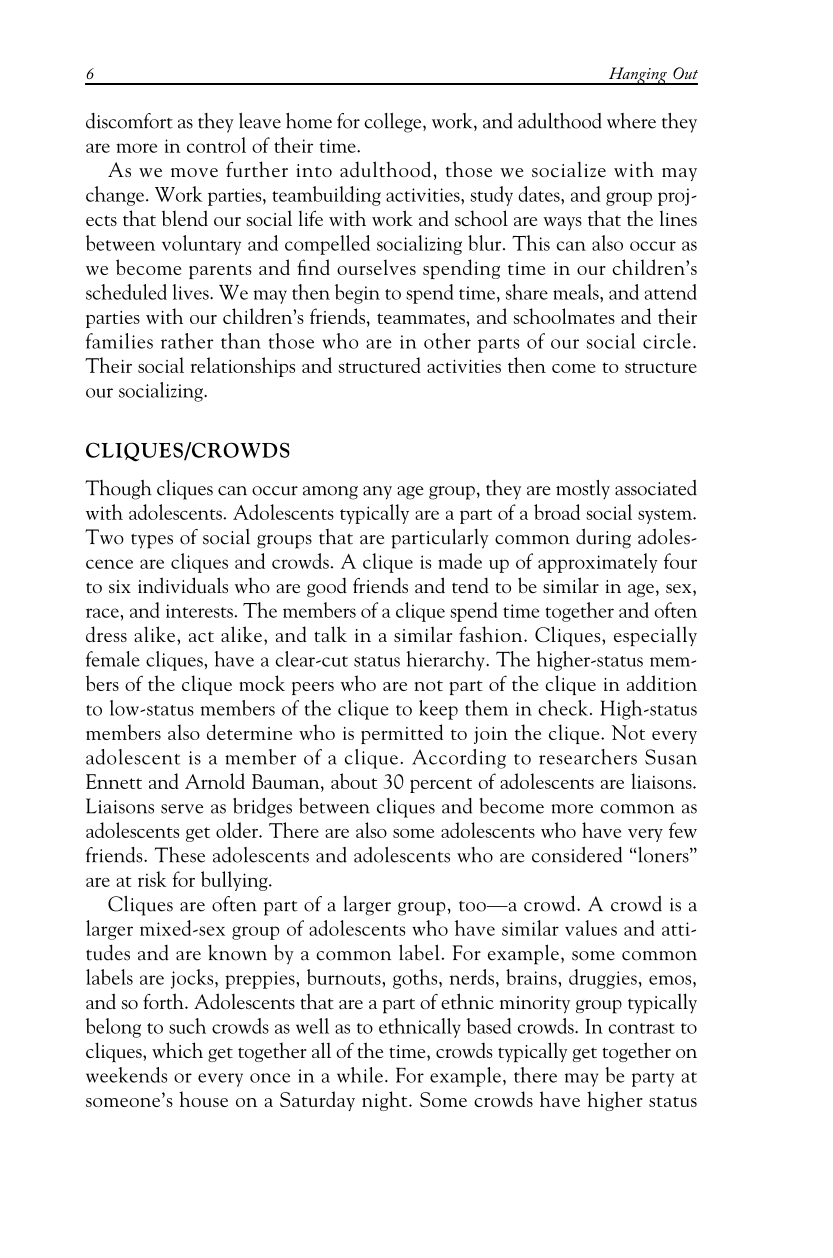discomfort as they leave home for college, work, and adulthood where they
are more in control of their time.
As we move further into adulthood, those we socialize with may
change. Work parties, teambuilding activities, study dates, and group proj-
ects that blend our social life with work and school are ways that the lines
between voluntary and compelled socializing blur. This can also occur as
we become parents and find ourselves spending time in our children’s
scheduled lives. We may then begin to spend time, share meals, and attend
parties with our children’s friends, teammates, and schoolmates and their
families rather than those who are in other parts of our social circle.
Their social relationships and structured activities then come to structure
our socializing.
CLIQUES/CROWDS
Though cliques can occur among any age group, they are mostly associated
with adolescents. Adolescents typically are a part of a broad social system.
Two types of social groups that are particularly common during adoles-
cence are cliques and crowds. A clique is made up of approximately four
to six individuals who are good friends and tend to be similar in age, sex,
race, and interests. The members of a clique spend time together and often
dress alike, act alike, and talk in a similar fashion. Cliques, especially
female cliques, have a clear-cut status hierarchy. The higher-status mem-
bers of the clique mock peers who are not part of the clique in addition
to low-status members of the clique to keep them in check. High-status
members also determine who is permitted to join the clique. Not every
adolescent is a member of a clique. According to researchers Susan
Ennett and Arnold Bauman, about 30 percent of adolescents are liaisons.
Liaisons serve as bridges between cliques and become more common as
adolescents get older. There are also some adolescents who have very few
friends. These adolescents and adolescents who are considered “loners”
are at risk for bullying.
Cliques are often part of a larger group, too—a crowd. A crowd is a
larger mixed-sex group of adolescents who have similar values and atti-
tudes and are known by a common label. For example, some common
labels are jocks, preppies, burnouts, goths, nerds, brains, druggies, emos,
and so forth. Adolescents that are a part of ethnic minority group typically
belong to such crowds as well as to ethnically based crowds. In contrast to
cliques, which get together all of the time, crowds typically get together on
weekends or every once in a while. For example, there may be party at
someone’s house on a Saturday night. Some crowds have higher status
6 Hanging Out

























































































































































































































